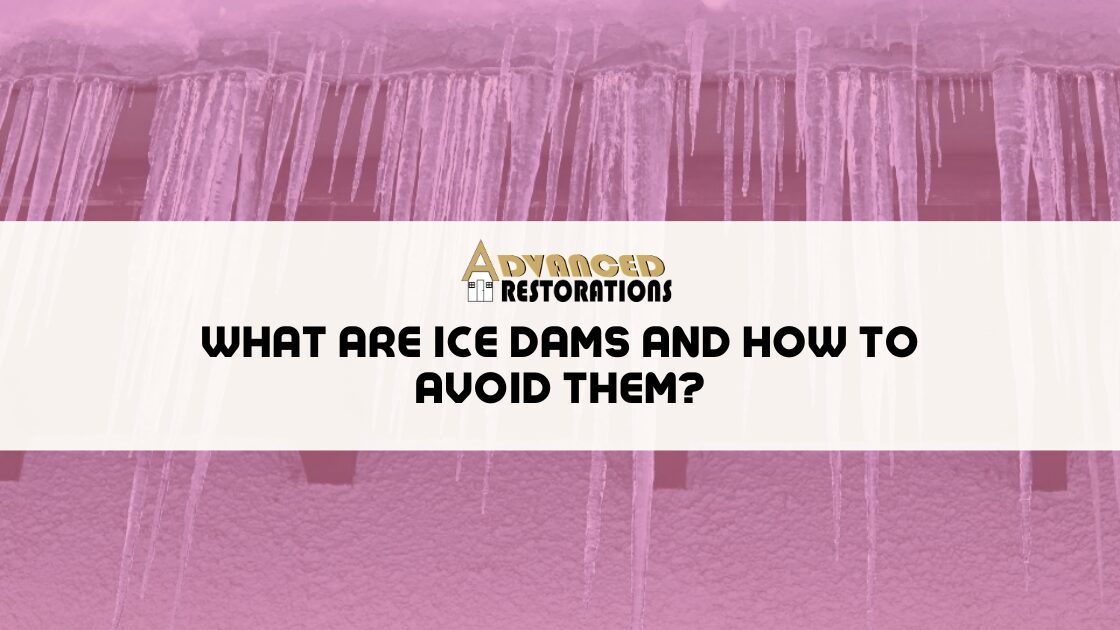
What Are Ice Dams and How to Avoid Them?
Ice dams are a hazard that are often overlooked by homeowners. Icicles hanging on the side of the roof may look aesthetically appealing at first, they are a huge risk to homeowners and a signal of something far worse forming. A properly designed and built roof, will not form any icicles, and instead snow that melts runs down your gutters. At times, an ice dam will form due to the shape of your roof causing icicles to block gutter passages, which then prevents melting snow from draining and instead refreezing in place on top of your roof. The water being unable to drain properly can cause huge issues for homeowners such as leaks, mold, and other interior damage. If you start to see a skirt of icicles forming along your edge, that is a sure sign you have an ice dam forming.
Beyond icicles forming on the outside of your home, it is important to check on the inside of the attic and beneath the roof to see if water stains or mold has formed where drywall has been affected. At times, condensation may even form in the back of your cupboards due to thermal-leakage issues within your home. Many factors along with a poorly shaped roof contribute to ice-dams forming on your roof, but it is important to remember that improper heating and cooling of your home can play a role in ice-dam formations.
It is important to allow a roof to remain cold in the wintertime so that increases in warmth do not cause excess melting and drainage in spots where ice can form. Thermal coverings are a newly popular practice, that allows the snow and ice to harmlessly slide off your roof, while melting evenly. While this practice is certain to prevent ice damming problems from occurring, it requires a large investment that may be better utilized towards improving insulations and sealing off air. Checking the insulation of your attic and home for issues such as thermal bridging through walls, or air leakage through walls and floors can help you determine if insulation could be the fix.
Additionally, it is important to keep in mind where your ventilation equipment is located. In many older homes, the cooling and heating systems are in attics. If your ventilation equipment is in the attic, you should consider alternative equipment or find a way to move the equipment of the attic due to lack of efficiency. It is not cost effective to have this type of equipment located in the coldest and hottest part of the home seasonally. Oftentimes during the hottest days of the year, cooling equipment is working overtime so being in the hottest part of the house does not help any when it comes to allowing your equipment time to cool off. The same can be said for heating equipment that is being cooled down so much the pipes and vents may freeze.
If you are currently experiencing an ice dam formation on your roof, there are a few options available to safely remove the issue. One of the first options is looking into ice rakes specifically made for roofs. When dealing with heavy ice buildup, an ice pick may become necessary to break apart the buildup. If you prefer to keep ice removal to the professionals, teams with ice melting chemicals can safely remove the ice buildup. Another method is to go to your local hardware store to purchase ice-dam socks, which contain ice melting chemicals that can safely melt away the ice after placed on your roof. While all these options may help to temporarily remove the ice buildup, it is important to take precautions to prevent further ice dams from forming. Making sure that you properly maintain your roof and the structure of your home are very important in the prevention of ice dams. If you are concerned about the structure of your roof or the insulation within your home, contact us today for a complimentary inspection.
